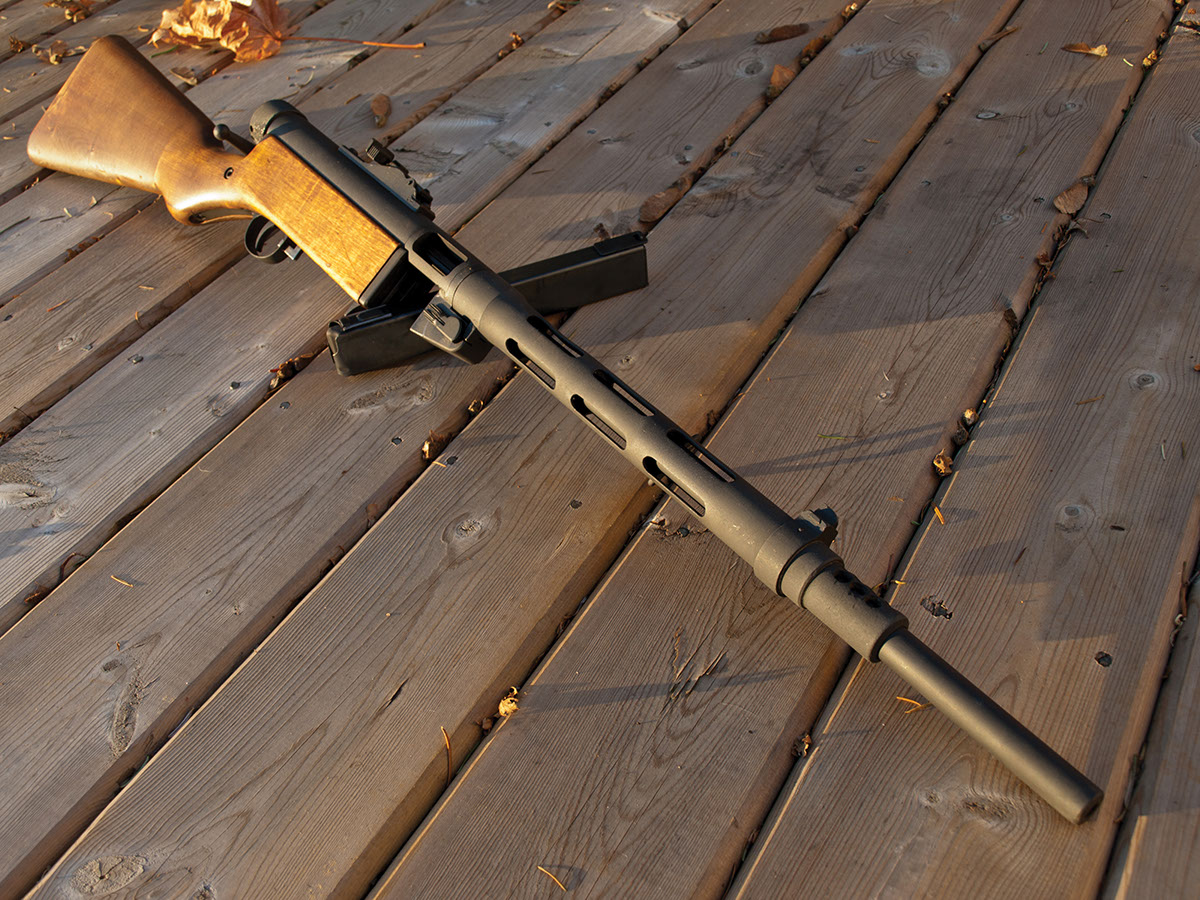
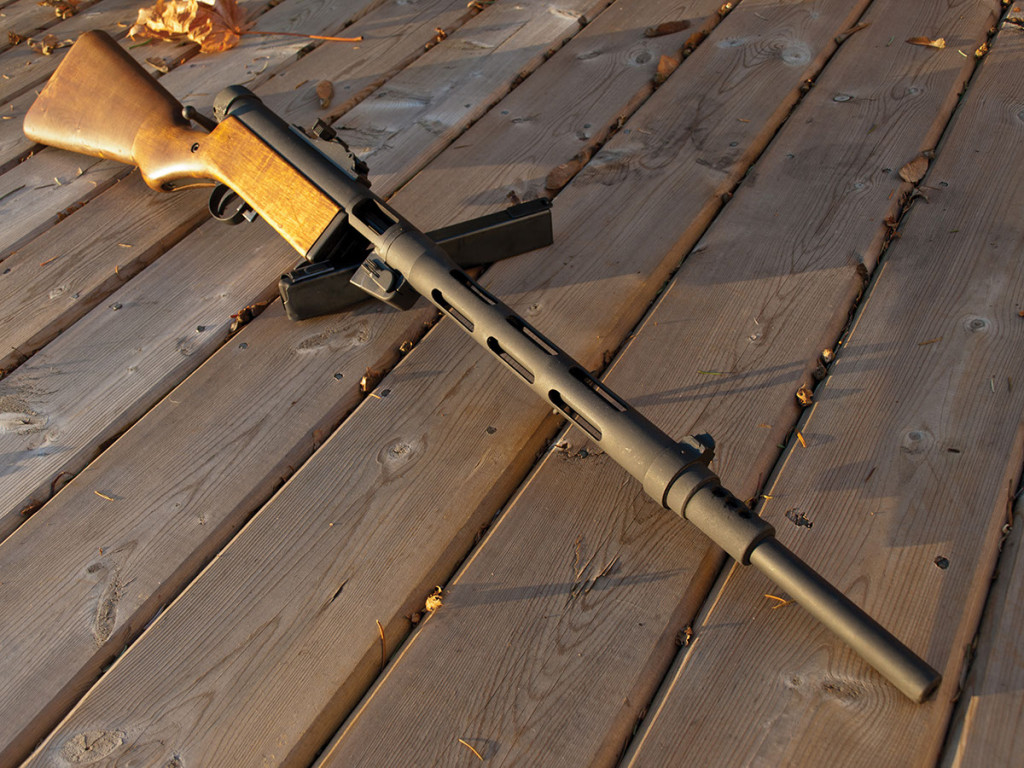 Throughout history, the submachine gun has always struggled to maintain the level of respect its longer and shorter siblings have earned. Granted, certain submachine guns such as the M1 Thompson and Israeli-made Uzi have certainly left their mark upon the annals of armed conflict, but by and large it's been the pistols, rifles, and machine guns that are best remembered. Unless of your course you happen to hail from Finland. Because it was during Finland's oft-forgotten Winter War that another submachine gun distinguished itself as a surprising effective weapon: the Suomi KP/-31.
Throughout history, the submachine gun has always struggled to maintain the level of respect its longer and shorter siblings have earned. Granted, certain submachine guns such as the M1 Thompson and Israeli-made Uzi have certainly left their mark upon the annals of armed conflict, but by and large it's been the pistols, rifles, and machine guns that are best remembered. Unless of your course you happen to hail from Finland. Because it was during Finland's oft-forgotten Winter War that another submachine gun distinguished itself as a surprising effective weapon: the Suomi KP/-31.
First concocted in the mind of Aimo Lahti, the KP/-31 has its roots in 1922, when Lahti and one Lieutenant Y. Koskinen developed an early prototype of a submachine gun incorporating a machine-gun inspired quick-disconnecting barrel and a nearly hermetically sealed receiver. Known 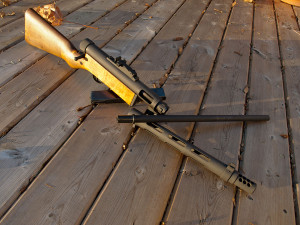
That screw-adjustable, vacuum-operated fire rate adjustment system allowed Lahti to tune the gun's recoil characteristic so as to enable it to reliable fire the larger, longer 7.63mm Mauser or 9x25mm Mauser rounds preferred by export markets. So, having finally settled on a selection of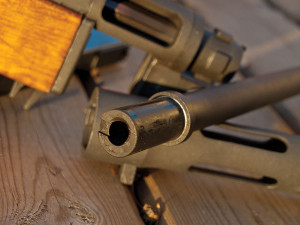
The first issue Lahti looked to address was one of reliability: Since it was chambered in rounds only slightly shorter than the bolt's total travel under recoil, the K/P-26 operated on the thin edge of the proverbial wedge, requiring absolutely unimpeded rearward movement of the action to extract, eject, and chamber rounds reliably. The solution to this was the adoption of the shorter 9x19mm Parabellum cartridge that was gaining popularity with militaries around the world. Delivering more power in a smaller package, the 9mm cartridge's shorter case ensured the gun would be more reliable as well, but also required Lahti redesign the KP/-26's magazine. Initially designed to hold 36 rounds of short, bottlenecked cartridges, the KP/-26's magazine's design was a heavily curved box that curled around nearly 180 degrees, and fitted into a narrow magazine well inletted into the wooden stock. However, recognizing the potential of pairing his gun's quick-disconnect barrel with a properly large-capacity magazine, Lahti took a page from the Thompson M1A1's page and redesigned his submachine gun to include the 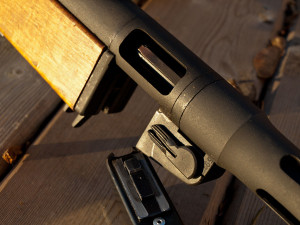
Used effectively against the advancing Russian forces during the Winter War, the one major feature that differentiated the Suomi from its contemporaries would also prove to be the most important one: the quick disconnecting barrel. A task that involves just three steps (rotating the barrel jacket key down, removing the barrel jacket, and then pulling the barrel free), it was a feature that was much appreciated by Finnish soldiers that used their KP/-31s to fire thousands of rounds at advancing Russians in just two or three hours, with some even reporting such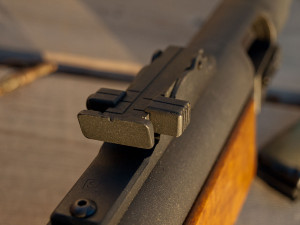
Initially developed in an age when combat arms were milled from solid chunks of steel and expected to last generations, the KP/-31's high quality of manufacture would ultimately prove to be its demise. In the face of a myriad of cheaply manufactured, stamped steel submachine guns, the Suomi, which literally relied on its excellent bolt-to-receiver fit in order to function, was simply too costly to manufacture. However, Lahti's desire for to build an "everlasting" gun wasn't for naught, as Finnish forces continued to use the KP/-31 in active duty well into the 1990s, even though production of the hefty SMG ceased decades earlier, in 1944.
The Civilian Version
Of course, the guns fired in anger during the bitterly cold winter of 1939 aren't exactly the same ones you can buy here in Canada. Made from parts kits featuring entirely new receivers, the TNW M31 may share its proportions, calibre, and overall design with Lahti's fully automatic submachine gun, but in operation, there's a quite a few distinctions. First off, in order to pass as semi-automatic only firearm and not a converted automatic, the TNW receivers are smaller internally than the original, which prevents the fitments of a fully-automatic bolt assembly. Next, the appropriately undersized bolt is fitted with a hammer-fired firing pin, as opposed to the original's fixed firing pin. Interestingly, early models of TNW's M31 featured a striker fired bolt assembly, but the design was changed over to a hammer fired setup for reliability. However, in either case, the new gun fires from a closed bolt, rather than an open bolt as on the original KP/-31. And then of course the barrel was lengthened to 18.75" in order to meet both US and Canadian legal standards... and yes, that makes it non-restricted.
But that's enough of the flim-flam about it s design; how does TNW's take on the Suomi feel? Well, in a word, heavy. According to TNW's specifications, it weighs in at roughly 10-1/2 pounds, but truth be told, it feels heavier. With the longer 18.6" barrel, shroud, and entirely milled tubular receiver, most the weight sits towards the muzzle of the rifle, which makes holding it in the offhand position a bit tiresome.
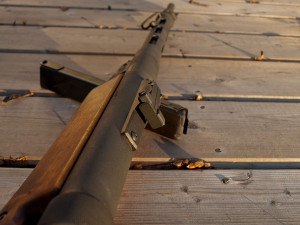
But the tuning didn't stop there. With the barrel and shroud now firmly affixed to the receiver, and the barrel-shroud take-down lever tightened up (the lever tension is adjustable via a screw on the receiver), it was discovered that the magazine well was slightly too tight to allow magazines to be inserted with anything less than a sledgehammer to drive them home. This is a result of the Suomi's manufacturing process, which involves the welding of two pieces to make the receiver; the first piece constituting everything from the bolt face rearward, and the second piece comprising everything from the bolt face forward. Since the magazine well lives smack dab in between these pieces, a slightly too-tight tolerance in the welding process resulting in a magazine well that was slightly too small fore and aft to allow the surplus magazine to be inserted and removed. Some time with a metal file and the magazine's front and rear guide rails solved the issue.
Speaking of which, it's worth noting that the magazines that come with the Suomi are, in all honesty, absolutely fantastic. Being surplus pieces, they're indicative of Lahti's "everlasting" mentality, and are both robust and reliable. Made of 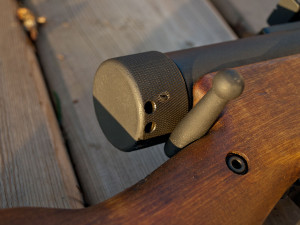
So, with the gun cleaned, lubed, and tuned, and a gratuitiously large magazine holding a whopping five rounds of CCI Blazer 124-ground FMJ 9mm ammunition, it was time to pull the trigger. Which did nothing. As it turns out, the Suomi's sadly riveted magazine is limited to just five rounds, rather than the five and a half that most manufacturers allow for. This in turn prevents the magazine from properly seating when it's completely loaded, and prevents the bolt from properly feeding rounds out of it. The permanent solution, which is a task that legally should be left to a gunsmith as it requires momentarily possessing an un-pinned and loaded magazine, is to disassemble the magazine, remove the rivet, and load five rounds. Then, insert the magazine into the Suomi with the bolt closed, and use a Sharpie to place a mark on the follower through the hole formerly occupied by the rivet. Finally, disassemble the magazine and use a Dremel or similar tool to grind a slot into the follower to allow it to clear the rivet, and put it back together. Once it's back together again, it will remain a totally legal device in the eyes of law, but will also be capable of seating under a close bolt with five rounds inside.
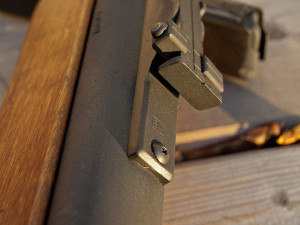
Because if there's one thing the Suomi is, it's fun. The heavy barrel and shroud soak up nearly all the recoil of the 9mm round, and completely negate any sort of muzzle rise to give you a gun that shoots with no greater impact than a .22. Even the report, due to the long barrel, is little more than a pop. And since a few hundred rounds of various cheap 9mm ammunition varieties only gave way to one hiccup (an American Eagle round that got hung up on its way into the chamber), it's safe to say that they're pretty reliable too boot, which isn't all that surprising when you consider that's it's probably the most overbuilt gun on earth. If you were a crazy Finn stuck in the midst of the Winter War, it probably gave you at least a little bit of confidence knowing that even a seized up and stuck Suomi would make a perfectly serviceable club, should anything stumble into your trench. Like a polar bear, for example.
Accuracy is about what you'd expect from such a gun; printing groups at 100 yards that hovered around 6 inches at 100 yards with the barrel shims installed, and roughly double that without. But it's not the sort of gun that you'd spend much time shooting at paper. Simply put, the front sight's quite large for target shooting, and the trigger, as it's shipped, is quite heavy and rough. But, although those pieces might conspire against its attempts on paper, the combination of the gun's friendly nature, utter reliability, and cheap ammo make it a great plinking gun. No more offensive to the shoulder than a 10/22, but shooting a round that'll actually make visible holes in gourds and beer cans, it's a ton of fun and just begs to be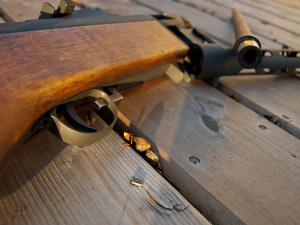
Initially, when the M31 arrived in the office, things didn't bode well for it. Between the ridiculous weight of the thing and the various tweaks it initially required, hopes were not high for its performance on the range. However, after dragging it, and a few other old favourites down to the local gun club, the Suomi kept finding itself being brought out of the rack over those old favourites. Fun as hell, cheap, and reliable, it's just a great little guilt-free gun that's as easy and fun for an experienced shot as it for a new shooter. Combine all that with the historical importance of the KP/-31, and it makes for one hell of a great gun for those that are looking for a fun gun to go plink with, especially given the price. With prices hovering around $700 from most retailers, it's relatively affordable, and definitely tips the scales as a lot of gun for the money!